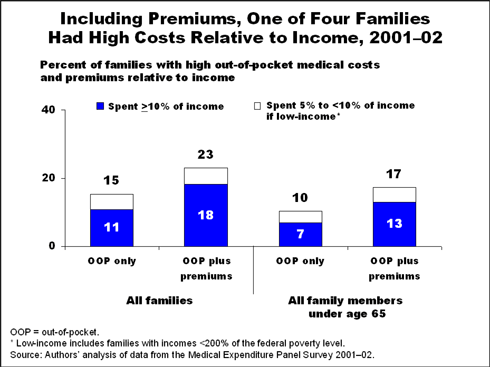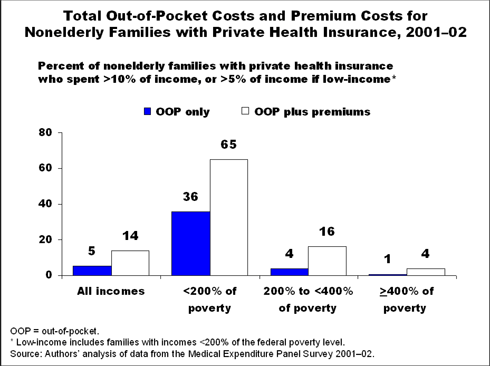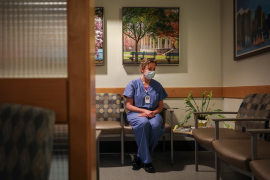New York, NY, February 1, 2006—Family out-of-pocket health care costs rose at a much higher rate than income between 1996 and 2002, according to new research released today by The Commonwealth Fund. As a result, by 2002, nearly one of six (15%) families experienced high out-of-pocket costs relative to their incomes. This represents about 18 million families, or 35 million individuals nationwide with high health care costs relative to income. Adding premiums to out-of-pocket costs for medical care, nearly one-quarter (23%) of all families devoted high levels of their total income to health care in 2002. This represents about 27 million families.
The dramatic rise in out-of-pocket health care spending—which increased an average of 35% between 1996 and 2002—far outpaced the 20% increase in average family income during that period.

The researchers defined high health care costs as equal to 10% or more of income for all families, or 5% or more of income for a low-income family (below 200% of the federal poverty level). Out-of-pocket costs are defined as deductibles, coinsurance or copayments, and payments for services not covered by insurance. Family health care costs are defined as out-of-pocket costs for health services plus premiums paid by families (including single individuals).
The proportion of families having high out-of-pocket spending was highest among elderly families. But it was also notably high and rising among non-elderly families with low and modest incomes. As of 2002, two of five (41%) non-elderly families with incomes under twice the federal poverty level spent more than five percent of their income on out-of-pocket costs and premiums.
While uninsured families are more likely to experience high out-of-pocket costs, insured families are also at risk. Among families who have private coverage, over one third (36%) of low-income families had high out-of-pocket spending when considering just medical care bills. Adding premiums, about two-thirds (65%) of these privately insured families spent a high share of their income on medical care and insurance.

"Today, families with low or modest incomes who are able to buy at least some health insurance coverage face an untenable choice: either stretch their budgets to take on unaffordable premiums for insurance that will protect their family and assure access to care, or purchase a plan that exposes them to very high costs and hope nobody gets sick," said Commonwealth Fund President Karen Davis. "Meanwhile, since 2000, an additional six million adults have lost insurance altogether, increasing the total number of uninsured to 46 million. We need a fundamental change to our health care system to bring health and economic security to all Americans."
The report, "Rising Out-of-Pocket Spending for Medical Care: A Growing Strain on Family Budgets," by Mark Merlis, an independent health policy consultant, and colleagues, uses out-of-pocket spending and insurance data from the Medical Expenditures Panel Survey (MEPS), to examine trends in out-of-pocket spending between 1996-97 and 2001-02. MEPS is a household survey continuously conducted by the Agency for Healthcare Research and Quality.
Citing the rapid increase in premiums and cost-sharing in employer coverage since 2002, the authors note that "given these trends, it can be expected that many more families—especially low-income families—will need to devote a steadily larger share of their budgets to health care." The consequences can include reduced access to care, loss of insurance, and increased medical debt or bankruptcy.
"While changing incentives for consumers may play some part in the solution to growing health care costs, it is also vital to assure that the most vulnerable families are adequately protected against the risk of unsustainable medical bills," they conclude.


